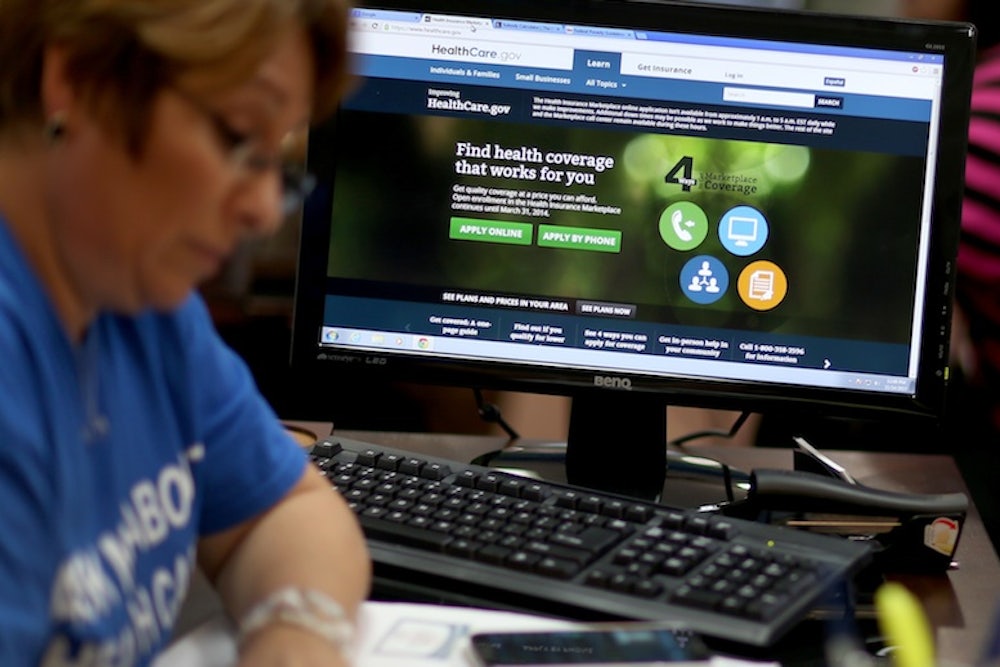Following the calamitous launch of healthcare.gov in October, Obama Administration officials vowed to fix things—promising, specifically, that the site would be "functioning smoothly" for the "vast majority of users" by the beginning of December. On Sunday, Administration officials suggested that they had achieved that goal. The “site is now stable and operating at its intended capacity,” Administration adviser Jeffrey Zients said during a conference call with reporters.
In practice, that means most people can log onto the system, create accounts, complete applications to obtain insurance and financial assistance, and then choose an actual plan. "Most" people is not all people, obviously: Some will still encounter errors, because of technical problems, and some will need human assistance (via a call center of navigator) simply because their personal or economic circumstances are complicated. In addition, administration officials warned that the site remains a work-in-progress. The "834" data that healthcare.gov sends to insurers, in order to confirm enrolments, still has an unacceptably high error rate. It's still possible that surges in traffic could overwhelm the system, preventing people from completing the application and plan selection process.
But the site's capacity is now double what it was in October, Administration officials say—up to 50,000 visitors at a time and 800,000 visits a day. The site also has a "queuing" system now. If you go online and get stuck because traffic is over capacity, you will receive an email notifying you when traffic has subsided and it's possible to resume the application process. (The queuing system hasn't been used yet, Zients said, even though traffic over the holiday weekend was higher than expected.)
One more lingering—but very substantial—issue is the status of people who tried to apply during the first few weeks, when the system was at times barely functional. Many of those people essentially got stuck at some point in the process and have been unable to complete the process since. Administration officials said that reaching out to those people, so that they can finish applications and obtain insurance in time for January 1, is at the top of their to-do list.
Will the administration succeed, so that these people get coverage in time? Will those 834 problems be addressed in time, so that people can actually use their insurance successfully? Will new problems materialize in the coming weeks, as more and more people try to use the system?
Those are among the very big questions that remain unanswered—and will for at least a few weeks. But the metrics administration officials released on Sunday—see the report below—suggest the system is now working much better than it was. As Zients said on the call, the difference between now and early October appears to be "night and day."
HealthCare.gov Progress Report Final by NewRepublic
